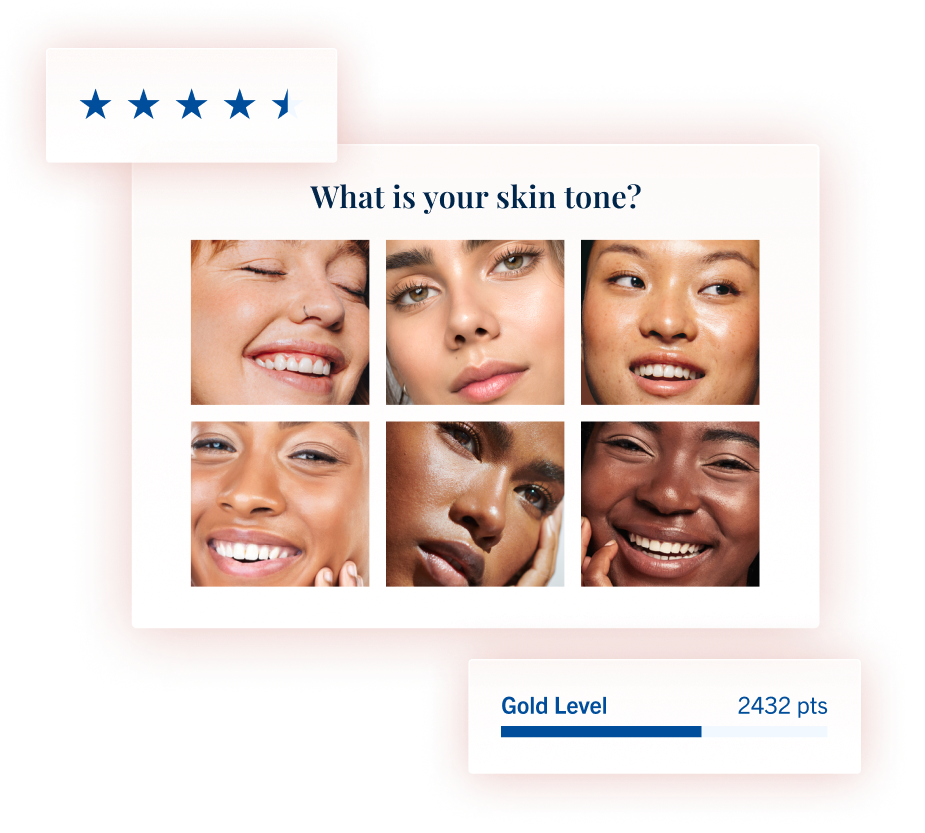What is beauty if not personal?
Today, beauty shoppers aren’t only driven by dollars and cents. They’re driven by something much deeper and more emotional. On the hunt for their next favorite lipstick or face cream, shoppers are driven by the pursuit of confidence, self-care, and empowerment.
The brand that can deliver this experience will secure a new customer — maybe for life.
In the hyper-competitive health and beauty market, personalization is non-negotiable. It’s no surprise then that market leaders are raising shopper expectations with advanced AR, interactive beauty quizzes, sticky loyalty programs, and hyper-personalized product recommendations.
When it comes to converting casual shoppers into brand loyalists, the beauty market can feel like a treadmill. Keep up or fall off. Health and beauty retailers know that a foundation of personalization is essential for acquiring new customers. But to grow those relationships, they need to create more cross-category buyers.
The nirvana is getting customers to shop multiple categories because every product has its own unique replenishment rate.
Bottom line: Whether you’re Sephora or the next Fenty Beauty and Fenty Skin, you have to create a one-of-one experience for all shoppers. You have to combine front-end personalization with back-end predictive capabilities that can surface targeted products with the ideal price point when your buyer is ready to spend.
How can high-growth health and beauty brands deliver this?
Customer movement. This marketing philosophy and framework, defined by customers rather than channels, is the starting point for a truly personalized and relevant experience. By identifying and moving customers through the lifecycle with targeted messaging and AI automations, health and beauty brands can create personalization at scale.
In this health and beauty deep dive, we’ll start by looking at identification — the engine that powers customer movement. Then, we’ll walk through the four stages of the customer movement lifecycle: acquisition, conversion, retention, and reactivation. Finally, we’ll map out the highest impact tactics your health and beauty brand can use to deliver a lasting personalized touch and create a loyal customer base.

Consider this: You’re tasked with buying a gift for a total stranger. You know nothing about this person. You’ve never met them. What are the odds you select a gift that makes them feel seen or moves them emotionally?
Now, consider the same scenario — only this time it’s your best friend. Equipped with insights from hundreds (or even thousands) of interactions, your odds improve dramatically. You know this person’s likes and dislikes, opinions and values, so you can deliver a one-of-a-kind experience.
That’s the power of shopper identification. By listening to a shopper’s digital body language, you can transform unknown visitors into known shoppers and shift the marketing focus from channels to customer-first experiences. You can gather the knowledge you need to wow them.
With identification powering your marketing engine, you can answer questions like:
- What product(s) is this shopper looking for?
- How often do they purchase?
- Are they brand loyal or shopping for discounts?
- What kind of messaging matters to them?
Shopper identification also enables health and beauty brands to address shoppers based on their stage in the lifecycle. For shoppers who are new to the brand or category, acquisition and conversion tactics will move the needle. Meanwhile, for repeat shoppers, retention and reactivation tactics are the go-to playbook.
Let’s next take a look at what customer movement looks like at every stage of the shopping lifecycle.

In the acquisition stage, the goal is to bring potential buyers into your store — virtually or in person — and begin creating their customer profile. This phase is critical as it sets the stage for future interactions and personalization efforts.
By effectively capturing and utilizing customer data from the outset, health and beauty brands can tailor their marketing strategies to meet the specific needs and preferences of their shoppers.
Foundational tactic: Capture customer data
To start, capturing customer data is essential. First-party information, like email and phone number, can be used to communicate directly with potential shoppers. This is also a good time to capture consent and communication preferences.
But don’t stop there. Track engagement, including what shoppers are browsing for and how they’re engaging with your store. This data can enhance their shopper profile to personalize future interactions.
Advanced tactic: Create a consistent shopping experience
Creating a consistent shopping experience is another key tactic in the acquisition stage. Start by identifying the referral source that led the shopper to your brand. Then, make sure there’s continuity between what the shopper saw on your landing page and what they encounter when they land on your brand’s website.
For example, if a shopper clicks on an ad for a skincare product, the landing page should prominently feature the advertised product along with related items and cross-category recommendations. This approach not only meets the shopper’s immediate interest but also introduces them to a broader range of products, increasing the chances of a purchase.
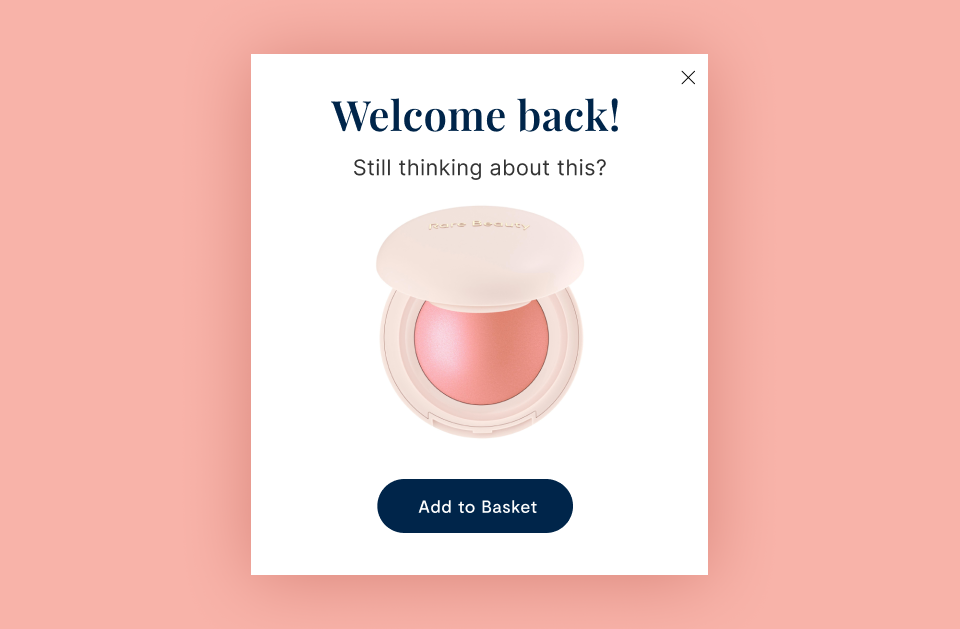
Bluecore Pro Tip
Deploy welcome back modals to create a personalized experience. As shoppers return to your site, greet them with personalized recommendations or offers. You can also borrow a page from a high-growth luxury fashion brand. During Valentine’s Day, the brand leveraged a creative dating app-inspired pop-up prompting visitors to “heart” or “X” products. This tactic boosted discovery and opened the door for increased conversions.
You can take this a step further with an AI shopping agent like alby. Instead of relying just on pop-ups or modals, alby engages returning shoppers in real time, answering questions, surfacing relevant products, and helping them rediscover the items that brought them to your site in the first place.

The conversion phase is crucial for transforming potential shoppers into active customers. The goal here is to complete a new customer’s first purchase, which serves as a gateway to future engagement and loyalty.
Foundational tactic: Introduce a loyalty program
Shoppers love incentives. And there’s no better way to incentivize shoppers than to reward them for making additional purchases. A loyalty program not only offers shoppers heightened status, but also signals a retailer’s willingness to recognize and give in the relationship to make it strong.
This incentivizes shoppers to join your program and further engage with the brand. It also provides additional buying signals you can leverage for future communication.
Foundational tactic: Onboard and nurture your new shoppers with real-time welcome campaigns
Now that you have a shopper’s email, start the conversation with a well-crafted welcome campaign. Customize emails to align with the referral source and start adding immediate personalization based on shopper behaviors. With alby, you can also embed shopper-specific Q&A directly into your emails, bridging the gap between interest and action by answering any questions that may be holding them back.
A welcome series is also a chance to demonstrate your brand’s values and personality. A thoughtful onboarding sets the tone for the customer relationship and encourages brand loyalty from the beginning.
Foundational tactic: Introduce beauty and health experiences
Interactive elements, like quizzes and personalized experiences, have become a staple in the health and beauty industry. Consider, for example, the beauty profile quiz. Asking questions about eye color, skin type, ingredient preferences, and beauty goals is an impactful way to gather data and recommend products. It can also feed personalized data directly into your AI shopping agent for stronger product recommendations and answers to everyday questions.
These tools not only attract potential shoppers but also provide valuable insights into their preferences, enabling more tailored and effective marketing efforts.
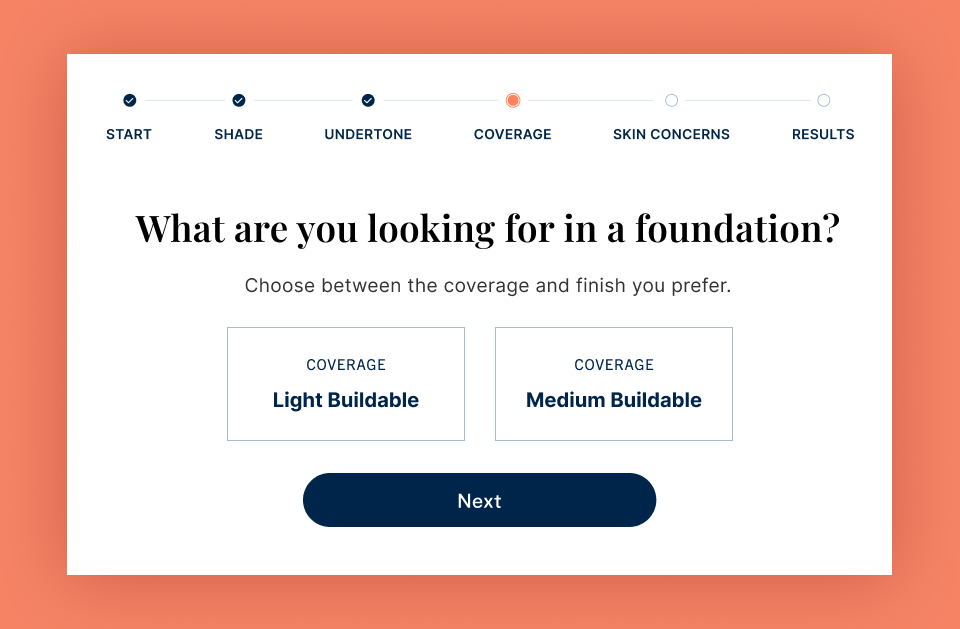
Advanced tactic: Be where your shoppers are
High-growth retailers effectively listen to customers’ channel preferences and connect where customers are most likely to engage. This leads to smarter retargeting ads – ads that remind customers of previously-viewed products, nudging them to return and complete their purchase. It also supports an excellent omni experience.
For instance, if a shopper viewed a lipstick on your site but left without buying it, retargeting ads featuring that lipstick, along with a special offer or discount, can encourage them to revisit and make the purchase.
Bluecore Pro Tip
Surface hidden gems. Start by identifying products with low traffic but high conversion. Bluecore customers, for example, use built-in AI features to identify these “hidden gem” insights and integrate hidden gems into their AI shopping agent workflow. Engage new shoppers with targeted messaging featuring the most relevant and likely-to-convert product.
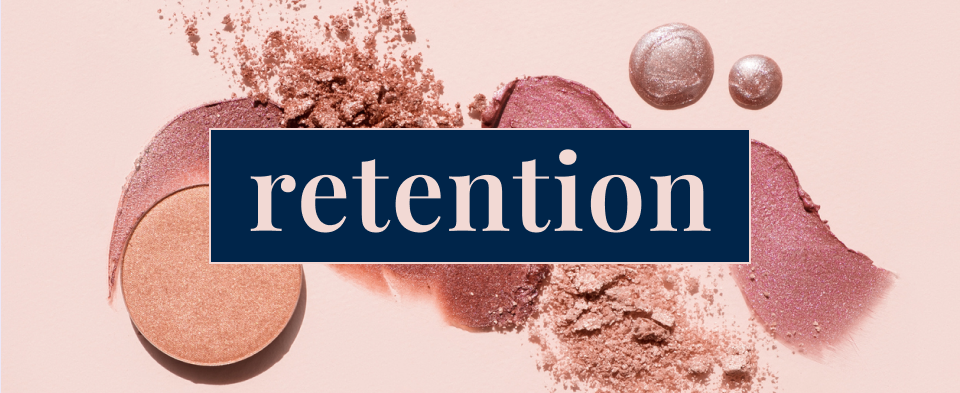
The retention stage is the most important phase in the customer lifecycle. Retention is crucial for encouraging repeat purchases, lowering CAC, and, downstream, increasing the lifetime value of existing customers. The fastest way to higher profitability is through retention. By keeping customers engaged and satisfied, health and beauty brands can turn occasional buyers into loyal brand advocates.
To get the most out of this stage, use customer data to deliver personalized recommendations and timely communications.
Foundational tactic: Provide personalized recommendations
Targeted recommendations are a powerful tool in the retention phase. With the data you’ve gathered through shopper identification, you can unlock next-level personalization and align recommendations with real-time inventory status.
Start by integrating purchase history, browsing engagement, and profile data into your recommendation engine. Then, to go further, leverage predictive modeling to anticipate what your customers want and need next.
And when it comes to messaging, don’t miss out on the opportunity to promote cross-category products. Beauty and health products have unique replenishment rates – by encouraging customers to shop multiple categories, you expand the buying window.
Lastly, combine personalized data with the power of an AI shopping agent to deliver real-time, one-to-one guidance. Help shoppers discover new products, get instant answers, and build confidence in their purchase decisions.
Advanced tactic: Segment customers by lifetime value
Segmenting customers by lifetime value (LTV) allows health and beauty brands to focus their retention efforts on the most profitable customer segments. By identifying customers by LTV, brands can tailor their marketing strategies to maximize engagement, loyalty, and revenue.
For high-LTV customers, early access to new products and personalized services – like beauty consultations – can provide a feeling of exclusivity. And don’t overlook the movable middle: customers with the most potential who are not currently engaging with your brand. Targeted content and direct engagement can turn these lukewarm customers into VIPs.
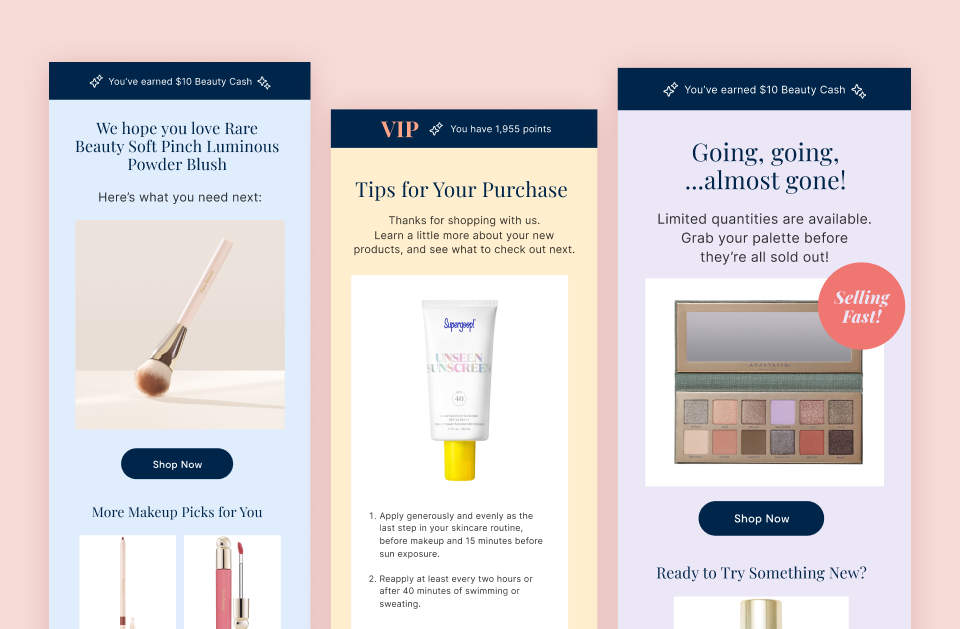
Bluecore Pro Tip
Enhance your post-purchase strategy. Pull in predictive LTV for a full snapshot of customer behaviors to more accurately assess and segment your customer file. You can then nurture new customers after their first order with tailored emails answering common questions, spotlighting how-to videos, highlighting top reviews, and suggesting their next likely purchase. A value-based approach to post-purchase engagement builds a strong foundation to deepen customer relationships over time.
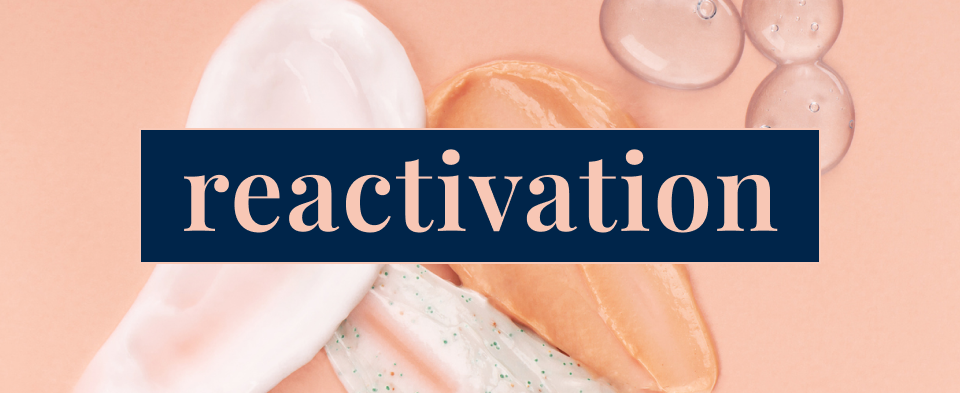
The reactivation stage is all about re-engaging customers who have lapsed over time. By bringing these customers back into the fold, health and beauty brands can boost sales and re-establish loyalty, turning once-dormant customers into active and engaged shoppers.
Consider this data from Bluecore’s 2024 Benchmarks Report: Compared with new buyers, reactivated buyers’ purchase frequency is 7.7% higher and they spend 12.7% more. Reactivating customers also, on average, costs less than activating new ones.
Foundational tactic: Distinguish between stock-up customers and active customers
There’s a wide range of purchasing patterns out there. To meet your customers with targeted messaging — and reactivate those who have lapsed — it’s important to identify and segment your file.
Stock-up customers, for example, may only purchase one or two times each year. Shoppers may be on the lookout for deals, signaling they aren’t brand loyal. But that isn’t always the case. Many stock-up shoppers are loyal, returning to the same beauty brand year after year.
Detailed customer data will help you identify between the types of stock-up shoppers, as well as catalog your most active customers. Ultimately, the strongest reactivation efforts will be those that align with the purchasing behavior of the customers.
Advanced tactic: Build upon past purchases
Backed by customer data and shopper identification, marketing teams can design campaigns intended to motivate purchase frequency from known buyers.
Replenishment campaigns are sent leading up to when customers typically reorder essential products based on past usage patterns. Complete the Look sections recommend products that complement previous purchases or those with similar attributes from other categories to expand search and trial. And “You might also like” sections suggest products that have been popular among shoppers with similar tastes and behaviors. Go even further with calendar reminder options, new product suggestions, preference quizzes, and store finders — all integrated into your AI shopping agent for real-time customer access.
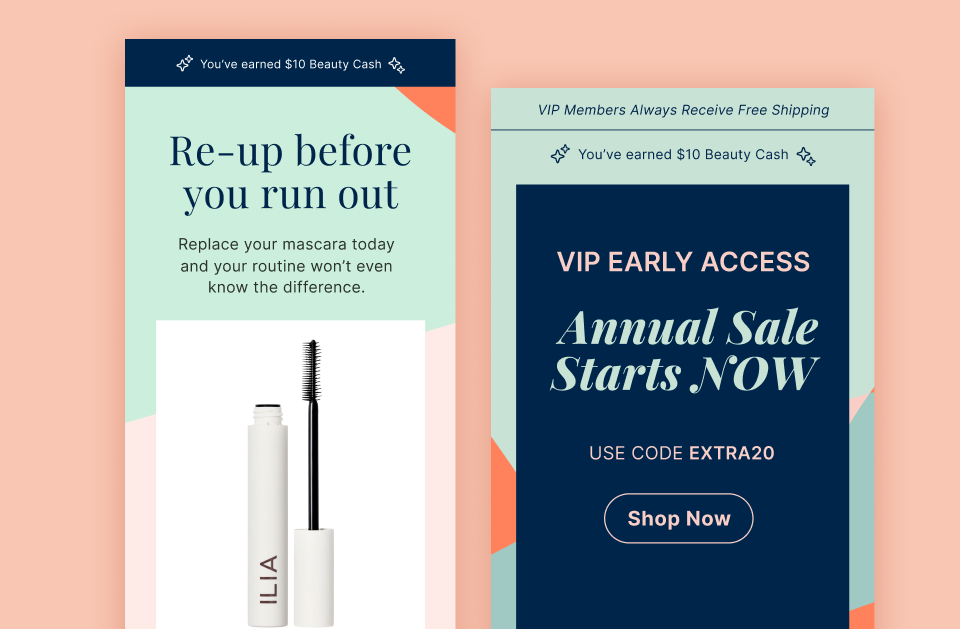
Bluecore Pro Tip
Connect customer behaviors (browsing, purchasing, etc.) and shopping product behaviors (back in stock, price drop, etc.) to increase retention. Use predictive modeling at the intersection of customer and product behaviors to understand unique purchase patterns, discount affinity, lifetime value, and more to meet the shopper at the right stage in the customer journey. Take the example of sending a replenishment product based on an average 6-month lifecycle. But knowing the customer purchases the product every three months increases relevancy and provides an upsell opportunity if you reach out at that time.
Predictive modeling can also be used to anticipate shopper needs based on usage and timing. Send shoppers reminders about replacing a product before running out, as well as suggest new or complementary products. The goal is to stay relevant throughout the lifecycle so you can position your brand and remain top-of-mind for the next purchase.
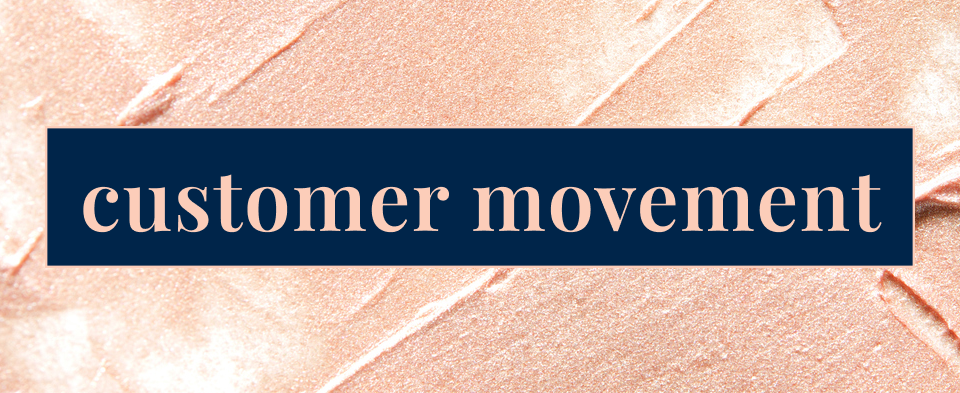
Bluecore data shows that retailers focused on channel-led growth see an average three-year customer retention rate of 22%. On the other hand, retail leaders who have embraced customer movement see an average three-year customer retention rate of 59%.
To help retailers unlock customer movement, we offer Bluecore’s proprietary Customer Movement Assessment to dive deep into a retailer’s shopper data to find performance gaps and opportunities, comparing it to our peer index of 200+ companies.
The Customer Movement Assessment includes:
- Full customer file analysis
- Peer benchmarking for identification and retention
- Bottom-up trended forecast
- Campaigns to move customers through the funnel
Retailers who complete a Customer Movement Assessment walk away with a detailed strategy for achieving their growth priorities using the power of customer movement, whether you choose to work with Bluecore or another partner. Get your assessment started and join the (customer) movement.


